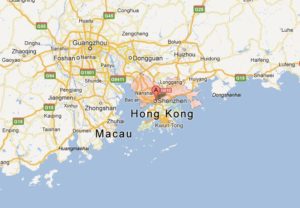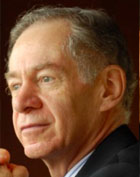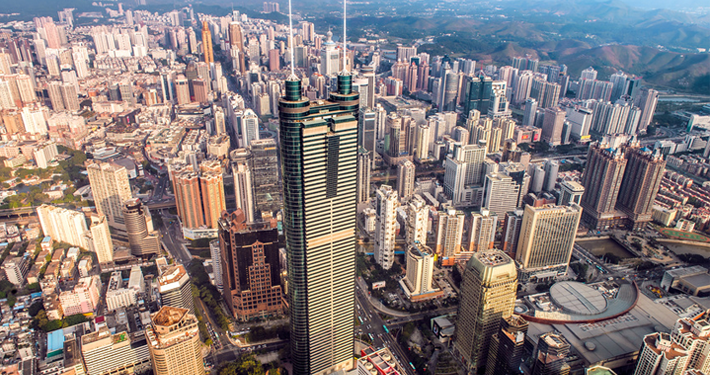Can China achieve Xi Jinping’s vision of becoming a “moderately prosperous society” if the world’s second largest economy continues to be dominated by state-owned, state-run companies?
Not by conventional models of markets and economic growth. Job security and self-dealing in China’s state-owned enterprises have been known to override what markets value more: innovation, risk-taking and reinvention.
President Xi’s 19th Party Congress two weeks ago called for stronger, bigger state companies along with more support for private firms. That may sound like a dead-end contradiction to capitalists in the West. But it prompts an intriguing question: can China’s state-owned enterprises become more efficient and profitable within China’s government-controlled economy?
It’s possible. State-owned enterprises (SOE’s) can bend toward market forces if they are not state-managed enterprises.
Richard and his private-equity partners at Newbridge Capital made a winning bet on that belief a decade ago. What follows are highlights of that story in chapter 7 of An Accident of Geography, “Capital and Finance in Developing Communities.”
** **
 The Beijing government opened its domestic banking system to foreign investors for the first time after joining the World Trade Organization (WTO) in 2001.
The Beijing government opened its domestic banking system to foreign investors for the first time after joining the World Trade Organization (WTO) in 2001.
A few years later Newbridge acquired a minority ownership stake of 18 percent in an industrial bank in Shenzhen, just north of Hong Kong, that had suffered massive losses. In less than five years, by 2009, the bank was reborn as a prosperous lender in the fast-growing market of middle-class consumers.
After years of million-dollar losses, board members and regulators of Shenzhen Development Bank were ready to experiment with proven market-style management after China joined the WTO. They had competing bids. Only one was in the form of private equity. Others came from large financial institutions.
Newbridge acquired the 18-percent stake from Shenzhen’s city government. The group was now the largest shareholder, yet was given only four seats of 15 seats on the board of directors. Others represented various Chinese investors including government entities or government-influenced groups.
In effect Shenzhen Development remained government controlled and regulated throughout Newbridge’s investment. But Newbridge had management control. It set strategy and led operations, with more than $100 million of its backers’ funds wagered on an uncertain turnaround.
“Keep us informed,” the regulators advised. “As long as you are heading in the right direction, we are not going to shut the bank down.” A shutdown would have wiped out Newbridge’s investment.
The strategy was two-pronged. Strengthen lending operations with tighter standards and more efficient processes, including more advanced information technology. And, transform the culture into more of a meritocracy, injecting bonuses and other performance incentives throughout the organization to execute the strategy.
The second was the bigger challenge. Many in the bank’s senior management were political operatives, not bankers. No surprise. They had backgrounds in Shenzhen city government or as big customers of the bank at state-owned companies. Job security, not operating efficiency, was their priority. Many wondered if they would be replaced.
Richard knew that Shenzhen Development Bank would require patient, nuanced leadership to establish reliable, market-focused routines. But he also believed the bank’s existing employees understood their culture far better than offshore investors.
** **
 A former top U.S. Treasury official and onetime head of Bankers Trust Company in New York City, Frank Newman (photo inset), was recruited as chairman and CEO. He knew banking and finance, and how to build a team.
A former top U.S. Treasury official and onetime head of Bankers Trust Company in New York City, Frank Newman (photo inset), was recruited as chairman and CEO. He knew banking and finance, and how to build a team.
At his first meeting with a dozen bank leaders, executives sat stone-faced with notepads and no questions – expecting only to receive instructions. “It’s not going to work that way,” Frank told them. “I have a lot experience in banking, but not in China. You know your bank. You know your markets. We’re going to have to do this together.”
Over the next four years, he promoted several people to different positions at headquarters and in the branches. He recruited talent from outside the banks, such as a new credit officer and a new chief financial officer. He took on the old culture of cronyism and nepotism by a promoting a new head of human resources—previously the bank’s deputy secretary of the Communist party in charge of discipline—to manage benefits and a new code of ethical and professional conduct.
“This was the first code of conduct the bank ever had,” Frank recalls. “We decided at the board level we were not going to investigate everything that happened before. People had never been told what the rules were. They had operated in a different environment then. The woman who led human resources was very smart, very upstanding, and it worked out well.”
The bank’s market value increased more than tenfold by the time it was sold to Ping An Insurance, one of China’s most prominent financial institutions. All Chinese shareholders — individuals, institutions and government entities, shared in the gains Newbridge’s management helped create.
** **
Does Xi Jinping envision an economy with more mingling of market forces — and unfettered management — under the umbrella of government control? Will he favor the rule of law — and accommodate market dynamism — to extend his high-profile campaign against government or Communist party corruption?
This could happen … if official statements at the Party congress are backed by action, suggests Yukon Huang, author and senior fellow on China’s economy at the Carnegie Endowment for International Peace in Washington. Beijing continues to push for more diverse ownership of SOE’s, he notes, but is murky about in which industries state control should be relaxed, preserved, or stiffened.
“To become China’s next transformative leader,” Mr. Huang writes in the Financial Times, “Xi Jinping needs to find the right balance in allowing the market to play the ‘decisive’ role envisaged in the (latest Congress) statements while defining a different but still ‘leading’ role for the party.”
** **
Top photo, courtesy of UITP, shows southern China’s sprawling metropolis of Shenzhen, which has a population of 12 million people today in contrast to just 30,000 in the early 1980’s
Photo of Frank Newman courtesy of Global Strategic Associates


Leave a Reply